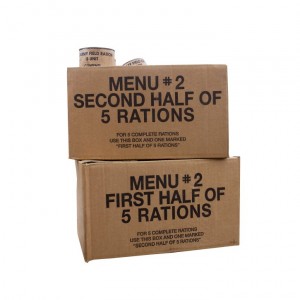 For manufacturers of emergency food packets, standards have to rise to an unrivaled level of excellence. The companies that package the packets must operate under the assumption that conditions requiring emergency rations are likely to be extreme and challenging.
For manufacturers of emergency food packets, standards have to rise to an unrivaled level of excellence. The companies that package the packets must operate under the assumption that conditions requiring emergency rations are likely to be extreme and challenging.
Fill levels are among the most important aspects of safe, dependable food-packet manufacturing. Inspecting and monitoring those levels is a central step in guaranteeing a safe and reliable product that can stand up to the critical task of surviving an emergency.
The Importance of Fill Levels
Emergency food packets are often used in the most extreme environments and climates, and are subjected to dramatic temperature fluctuations. Those fluctuations result in freezing, thawing, expansion and contraction of liquids, and overall product degradation. If fill levels are even marginally inaccurate, package rupturing or contamination can destroy an otherwise useable product.
An Alternative to Check Weighing
Whether emergency food packets come in metal cans, plastic bottles, composite containers or glass bottles, fill level monitoring is almost always superior to the check-weighing protocol. It is far more accurate, despite changes in weight or container shape. When it comes to speed - which directly impacts cost - there is no comparison. According to
Peco-Inspx.com, fill level monitoring can fly through 2,400 containers per minute, compared with 600-800 with the check-weighing protocol.
Flexibility and Adaptability
Fill level inspection machines provide a wide array of different functions for manufacturers of emergency food packets. A single device can provide assurance for labeled contents in beverages, verify the minimum head space in canned foods for thermal processing, and calculate the average fill level. Because of temperature changes and motion or shaking, overfilling or under-filling are among the most hazardous pitfalls associated with the manufacturing of emergency food packets. Fill-level inspection and monitoring can assure the right levels.
Beyond Fill Levels
Fill levels are just one important aspect of manufacturing emergency food packets. The high demands placed on rations in survival situations requires superior durability and preservation. From ideal cook temperatures to proper handling procedures, the United States Dept. of Agriculture outlines a range of specific and consistent standards regarding the packaging of emergency foods.
Emergency-food manufacturing standards are high because rations are crucial to surviving extraordinary situations. The stresses and demands of emergencies require special attention to be paid to fill levels in packaging. Appropriate fill levels are crucial to maintaining integrity under radical pressure and temperature swings. No matter what product youâre packaging, remember that the uniform guidelines laid out by the USDA apply to most emergency food production systems.
Andrew Lisa is a freelance writer who covers emergency ration manufacturing, MREs and survival equipment.










